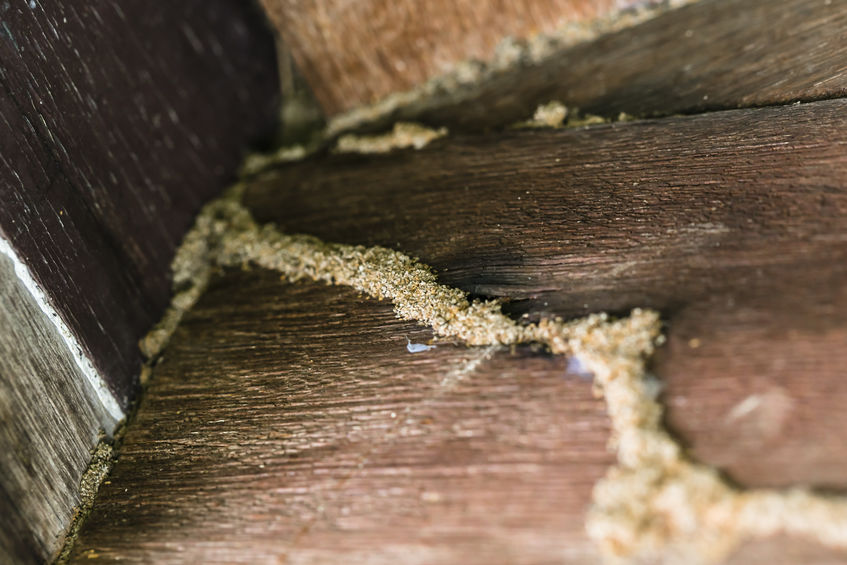Several insect species are known to inflict damage to finished wood sources, particularly the structural lumber components that make up timber-framed homes. For example, many insect pests naturally feed on both natural and finished wood sources, while others excavate cavities within wood solely for the purpose of nesting. Subterranean termites are well known for feeding on wood in order to retain cellulose, which is an organic compound found in all forms of plant life. Termites are easily the most destructive insect pests of finished wood, as they inflict more than two billion dollars in property damage annually in the United States alone.
Three types of termites exist, known as subterranean, drywood and dampwood termites, with the subterranean variety being responsible for the vast majority of infestations within US homes. Unlike drywood and dampwood termites, which live in colonies that are completely contained within above ground wood sources, subterranean termite colonies are located below the ground where workers tunnel through soil in search of food. Subterranean termite workers mainly collect pieces of decaying plant matter, such as dead root fragments, twigs, and wood that makes contact with the ground soil. Occasionally, workers establish infestations within homes by eating into structural lumber that makes contact with the soil. While subterranean termites must avoid exposure to the desiccating effect of outside air, they are able to access above-ground structural wood within homes by building “mud tubes.”
Mud tubes are commonly found running vertically along foundations, and they provide workers with a direct and airtight path between their moist soil habitat and above ground substructural wood sources near the ground. Mud tubes are usually a bit wider than a standard pencil, and they are also frequently found in crawl spaces where they protrude from the ground and connect to substructural wood sources such as joists, beams, studs, and mudsills. Advanced subterranean termite infestations often involve substantial damage to subflooring, windowsills and/or door frames. The presence of mud tubes within a crawl space or along interior or exterior foundation walls is proof that subterranean termites have established an infestation. When mud tubes are found, a pest control professional should be contacted so that a termite inspection can be carried out.
Have you ever found termite mud tubes along the foundation walls of your home?

